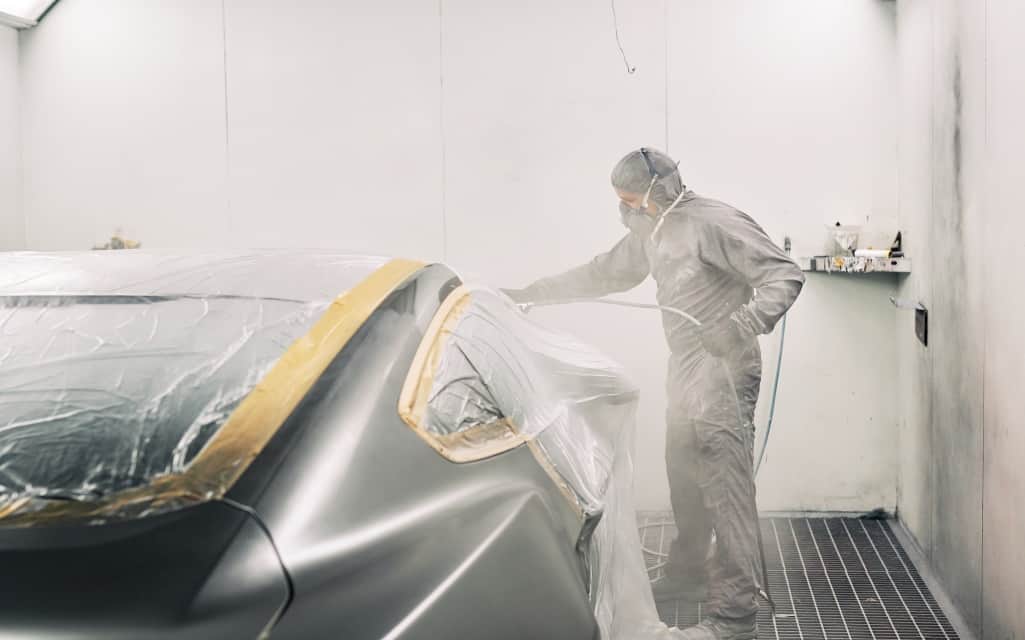Over time, your ride’s beautiful paintjob will wear down due to factors like UV light exposure, natural oxidation processes and pollution. There are ways in which you can revitalize your car’s finish by giving is a fresh coat of paint using the spray method. If you want to go the DIY route, better read the rest of the article for sound steps and advice about the process.
Materials to Use
You are going to use the following materials:
- Newspaper
- Sander (electric or 1200 and 2000 grit wet and dry sandpaper)
- Primer
- Masking tape
- Spray gun/air compressor
- Face mask and safety glasses
- Paint thinner
- Clear coat
The Steps
1. Prep your car right
Before spray painting your vehicle, make sure that it’s prepped the correct way so it will have a nice, professional finish. Prepping your vehicle will also take away unnecessary elements like dents, wax buildup or any scratches that can affect the paint job’s finish.
Clean the area where you want to treat the car first; get rid of dust and dirt that can stick to the wet paint. Wash the vehicle to take away all remaining contaminants on it like grease and grime.
Before the sanding and priming processes, you need to settle what areas you need to paint on your vehicle. In case you want to treat bigger, more complicated parts, then make sure that you have some mechanical knowledge on how to accomplish this task.
If you only want to enhance the car’s exterior, you can now mask the spots you don’t plan on painting using the tape.
2. Sand the vehicle
Sand the vehicle using circular motions and take away all coats from the clean one, the top and the base. You can either use the 1200 and 2000 grit wet and dry sandpaper or an electric sander for the job. For the corners and crannies, tackle these spots with sandpaper. Sand the areas until they are perfectly smooth.
Once it’s done, wipe the areas with a clean cloth and thinner to remove remaining traces of dust. If the vehicle has holes or gaps, you may need to fix it first before painting the car.
Read More: How to Keep Car in the Best Shape with Proper Maintenance?
3. Use primer on your car

Mask the areas you don’t plan on painting. Mix primer with the paint thinner. Read manufacturer’s instructions for the right proportions. Priming will allow the paint to adhere well on the vehicle.
Apply primer on the vehicle. Start with even, thin coats. Typically, it will take 2-3 primer coats to fully cover an area. You also need to wait approximately 20 minutes to an hour to allow the primer to cure.
If you are so inclined, you can opt to apply multiple coats of primer on the vehicle since a thicker application all at once is not recommended. For the second layer, you must let it dry overnight for a thorough cure. Just make sure that it’s covered sufficiently.
Once the process is done, the primer needs to be buffed with a 2000-grit wet and dry sandpaper. Wipe the primed surface of the vehicle with a bit of paint thinner but not use too much since this can strip the primer layer. Be careful when doing this step.
Then again, if the priming procedure was done properly, meaning all spots are covered with it evenly, there is really no need to sand the surface since evenly primed vehicle parts have a glassy, smooth and even finish.
Read More: Protecting Your Car’s Interior In 5 Ways
4. Paint the vehicle
Put masking tape again on areas you don’t plan on painting. Put newspaper under the vehicle to protect the floor. Place the spray paint on the spray gun and put on your safety gear; the glasses and face mask.
Point the spray gun approximately 10 inches away from the vehicle. Start spraying using regular, even motion. Spray from side to side. Let the layer of paint build up and make sure that it’s entirely even.
Allow the layer of paint to dry 20 minutes till an hour. Apply paint on those parts 3-4 times; use the suggested drying time mentioned by the product.
Take away dusty remains with the sandpaper. Wipe these areas down with a clean cloth after. Apply the clear coat and once dry, take away the masking tape carefully. Allow the clear coat to cure according to manufacturer’s specifications.
A DIY paintjob can be done as long as you know the essentials. This allows you to not only save money, but it makes for great practice on creativity as well.
For more complicated work though, it is better that you leave such jobs to the pros. A thorough paintjob is an essential investment that all car lovers should focus on particularly if they want to take advantage of their beloved ride for an extended period of time.
Make friends with great vehicle technicians and specialists in your area today to make such procedures a breeze to handle.



